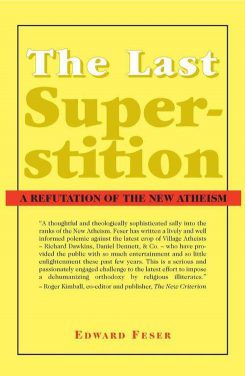The Last Superstition: Plato’s Forms
Chapter 2: Greeks Bearing Gifts is a recap of the history of Greek philosophy that led to Thomas Aquinas, which he’ll talk about in chapter 3. This is, in my opinion, the best chapter in the book.
I’ll skip over the first section, From Thales to Socrates because although it’s interesting, from a historical perspective, to see where certain ideas came from, most of Feser’s arguments are based on something like Plato’s Forms, so let’s skip ahead to that.
Plato’s Theory of Forms
If you draw a bunch of triangles, you’ll notice that none of them are perfect: one of the sides might be crooked (in fact, all of them are crooked, if you look at them through a microscope), or the corners might not quite meet up, and in any case, the sides have non-zero width. All of them are more or less good approximations to the abstract notion of a triangle. On top of which, we can think about triangles, and draw conclusions about them, that might not be true of any specific triangle that we can draw. So there are real-world triangles, and there’s the abstract notion of a triangle.
Likewise, dogs are all different from each other, but they all have something in common, namely that they’re dogs. But it would be tautological to say, “all dogs are dogs”. What is it, exactly, that all dogs have in common? For Plato, it’s their Form (which I will try to remember to capitalize, since it’s a term of art). Feser tells us:
What is a “Form”? It is, in the first place, an essence of the sort Socrates was so eager to discover. To know the essence of justice, for example – to know, that is to say, what the nature of justice is, what defines it and distinguishes it from everything that isn’t justice – would for Plato just be to know the Form of Justice. [p. 32]
In other words, a Form seems to be a definition, or specification. (Also, the terms “Form”, “nature”, and “essence” seem to be more or less interchangeable, here.)
that when we grasp the essence or nature of being a triangle, what we grasp is not something material or physical, and not something we grasp or could grasp through the senses. This is even more evident when we consider that individual perceivable, material triangles come into existence and go out of existence and change in other ways as well, but the essence of triangularity stays the same. […]
That does not mean, however, that in knowing the essence of triangularity we know something that is purely mental, a subjective “idea.”7 Nor is this essence a mere cultural artifact or convention of language. For what we know about triangles are objective facts, things we have discovered rather than invented. It is not up to us to decide that the angles of a triangle should add up to 38 degrees instead of 180, or that the Pythagorean theorem should be true of circles rather than right triangles. [pp. 33–34]
Yes, the astute reader will have noticed that triangles’ angles don’t always add up to 180 degrees, so in a way, it is up to us to decide whether we’re talking about euclidean or non-euclidean geometry.
But let’s leave that aside, and note that what Plato seems to be doing here is groping for the concept of information, or software. It might be hard to remember, but for most of human existence, this was a fairly difficult concept. You didn’t have a book or a letter as a separate entity from the paper it was written on. You could sing someone else’s song, and you could copy someone’s words or ideas in your own book, but for the most part, there was no need to distinguish between information and the medium it was recorded in. So Plato et al. get props for thinking about this.
Unfortunately, Feser doesn’t answer, or even discuss, some of what I think are rather basic questions about Forms: how many Forms are there? Is this a constant number, or perhaps can we create Forms as needed? Which Forms apply to a given object? And how do we know?
Feser tells us, above, that a crudely-drawn triangle, drawn in chalk on a sidewalk, is just a poor instance of the ideal “triangle” Form. But presumably it’s a decent instance of the “sidewalk art” Form, and a very good instance of the “wobbly triangle drawn in chalk where the corners don’t meet” Form.
What about an iPhone 7? Does it instantiate the “rectangle” Form? The “telephone” form (which in turn is an instance of the “electronic device” Form)? If you use it to tell time, does it instantiate the “clock” form? If you use it to hold down loose papers at a café, does it instantiate the “paperweight” form?
If, as I suspect, Plato assigned Forms to salient entities in his environment, I see no reason why we couldn’t define our own Forms based on what we find interesting or important at any given moment.
Later, we’ll talk about the toothpaste-eating squirrel.
